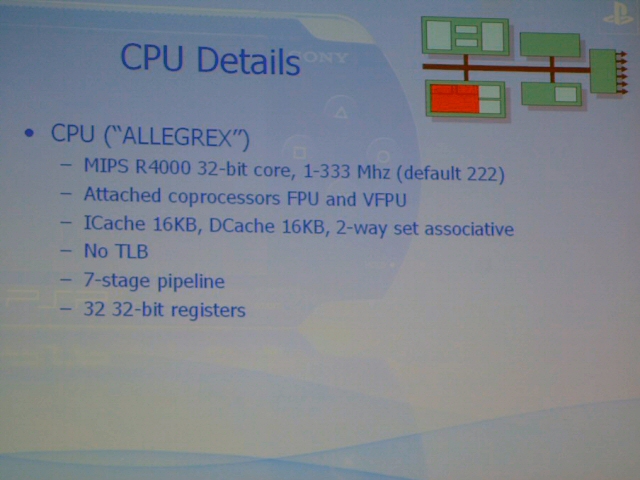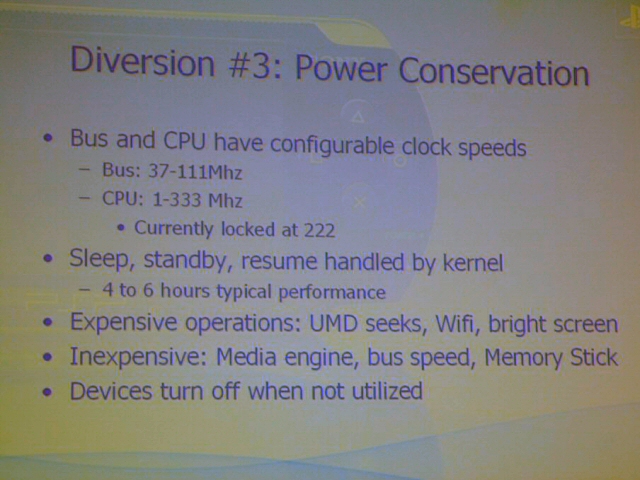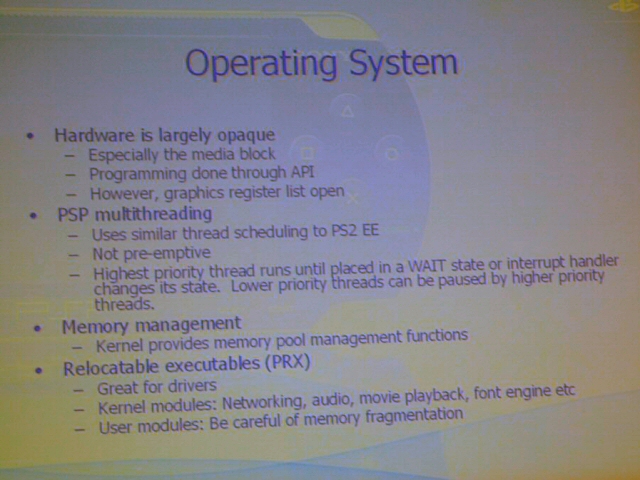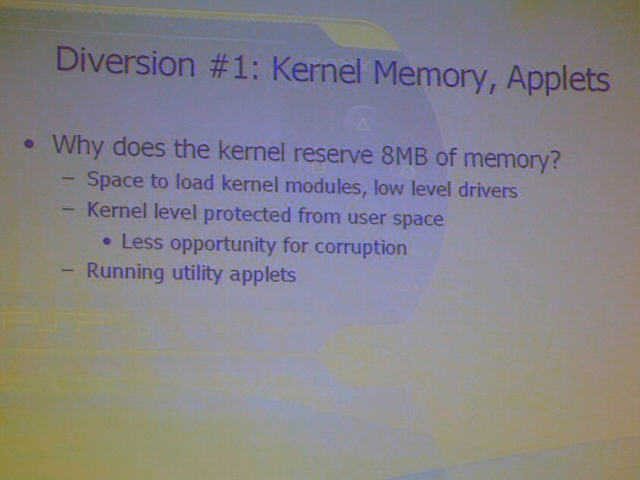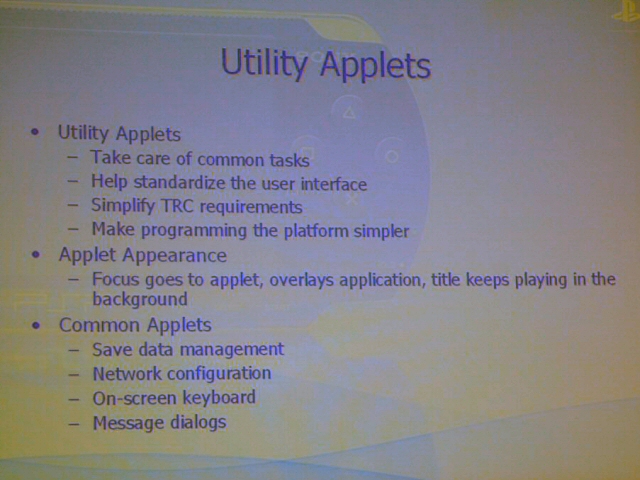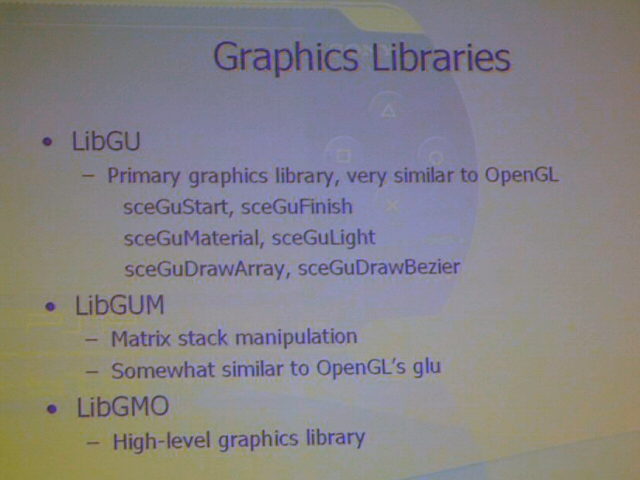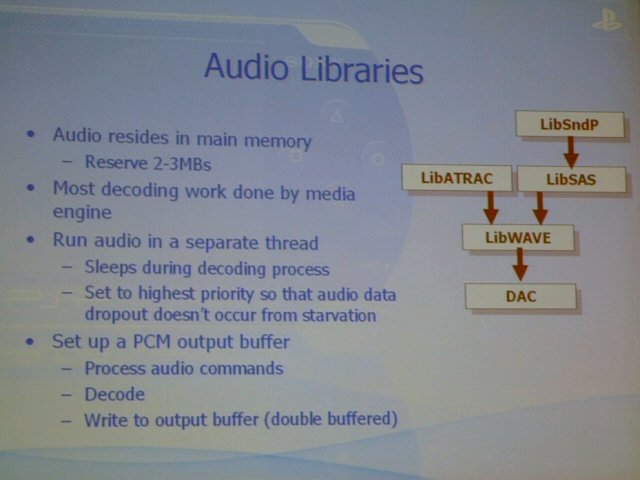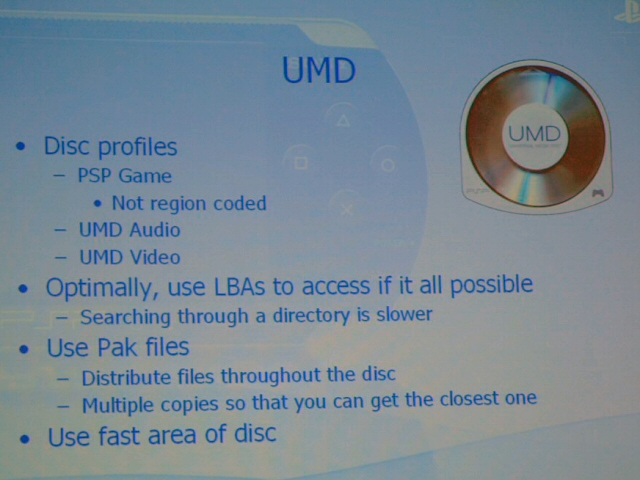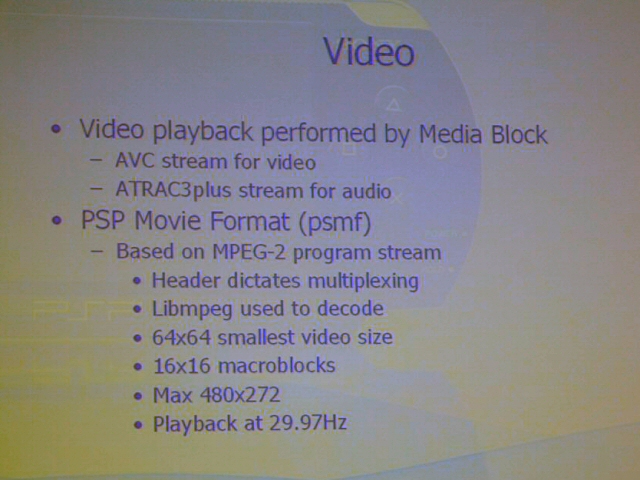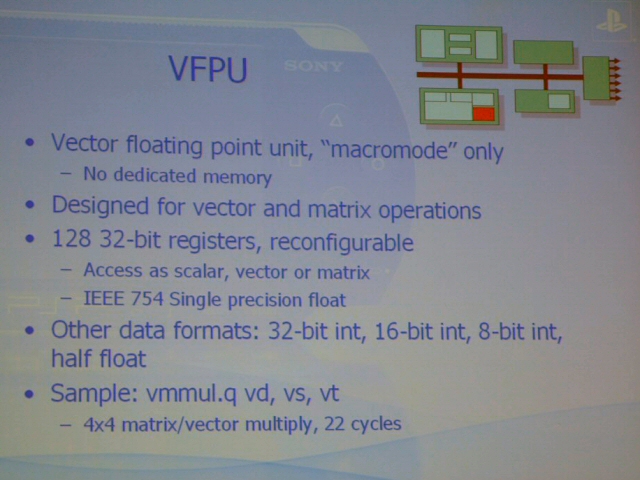ooPo wrote:Interesting...
'optimally, use LBAs to access if at all possible'
'multiple copies so that you can get the closest one'
- Hopefully this will put a big snag in the warez0rs trying to run stuff from anything other than the umd.
It may not put a snag in.. It depends on how the game developers code the games.
Basically the multiple copies are used as "cache" mode..
What I mean by this is by having multiple copies of the program scattered around the disc, the UMD can read one of the "copies" and resume from where it was at from a data file that happens to be next to that copy.. It doesnt have to go back to the original copy of the program..
[program] [animation file] [character data] [program] [sound file] [animation file] [program]
Even if it starts up using the first program, and then if it has to read the sound file thats further in the UMD (closer to the middle or edge) it can then read the program right before the sound file and resume from it..
Theres ways around it, but I'm not going to mention them. Its purpose seems to be just to help improve UMD response speed and reduce delay by reading from the UMD.
But honestly, there may not be that many instances of developers doing this, depending on the game.. I.e. multiple copies of programs will reduce space on the UMD if the game is large.

